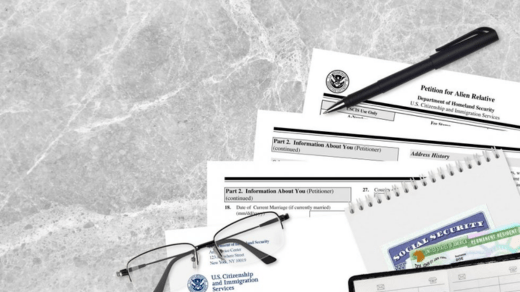Form I-130A is a supplemental form used in the United States immigration process. It is officially titled “Supplemental Information for Spouse Beneficiary” and is often filed along with Form I-130, Petition for Alien Relative. Form I-130 is used to establish the qualifying relationship between a U.S. citizen or lawful permanent resident and their eligible family member who wishes to immigrate to the United States. The I-130A is typically used in cases where the petitioner (the U.S. citizen or lawful permanent resident) is sponsoring their spouse.
Form I-130A gathers additional biographical information about the beneficiary (the foreign national spouse) and is intended to provide more details about the beneficiary’s background and history, including their address history, employment history, and other identifying information. This form helps U.S. Citizenship and Immigration Services (USCIS) to assess the bona fides of the marriage and verify the eligibility of the beneficiary for immigration to the United States.
When filing for family-based immigration, it’s essential to carefully follow the instructions and submit all required forms and documentation to ensure that the process proceeds smoothly. Form I-130A is just one component of the overall application package, and it should be completed accurately and submitted along with Form I-130 and any other necessary supporting materials. Keep in mind that immigration forms and requirements may change, so it’s advisable to check the USCIS website or consult with an immigration attorney to get the most up-to-date information and guidance.
How to fill out Form I-130A?
Filling out Form I-130A, the “Supplemental Information for Spouse Beneficiary,” is an important step in the family-based immigration process. Here’s a general overview of how to fill out the form. Please note that the instructions and requirements may change, so it’s crucial to check the latest version of the form and instructions on the official U.S. Citizenship and Immigration Services (USCIS) website or consult with an immigration attorney for the most up-to-date guidance. Here are the basic steps:
- Obtain the latest version of Form I-130A: Start by downloading the most recent version of Form I-130A from the USCIS website. Make sure you have the latest version as USCIS may update the form and its instructions.
- Read the instructions: Carefully read the accompanying instructions that come with Form I-130A. These instructions provide important guidance on how to complete the form and what documents and supporting evidence you need to submit.
- Complete the form: The form is straightforward, with various sections requiring information about the beneficiary (the spouse) and the petitioner (the U.S. citizen or lawful permanent resident). Some of the key sections include:
a. Part 1: Information About You (Petitioner): Provide your personal details, including your name, address, date of birth, and other biographical information.
b. Part 2: Information About Your Spouse (Beneficiary): Provide the beneficiary’s personal details, such as name, date of birth, place of birth, and any other requested information.
c. Part 3: Additional Information About You (Petitioner): Answer questions regarding your previous marriages, children, and other relevant information.
d. Part 4: Contact Information, Statement, Certification, and Signature of the Person Preparing this Petition: Provide the contact information and signature of the person who prepared the form if someone other than the petitioner completed it. - Supporting documents: The instructions will specify the supporting documents you need to include with Form I-130A. Typically, you will need to provide copies of identity documents for both the petitioner and beneficiary, such as passports, birth certificates, and any relevant marriage certificates. Include any additional evidence that demonstrates the bona fides of the marriage.
- Filing fee: As of my last knowledge update, there was no separate filing fee for Form I-130A when filed with Form I-130. However, USCIS fees can change, so check the USCIS website for the most current fee information.
- Review and double-check: Before submitting the form and supporting documents, carefully review all the information to ensure accuracy and completeness. Any mistakes or omissions can delay the processing of your petition.
- Mail the application: Mail the completed Form I-130A, along with Form I-130 and all required supporting documents, to the address provided in the Form I-130 instructions.
- Wait for USCIS to process your petition: After you’ve submitted the forms, USCIS will process your petition. You may receive a notice for biometrics (fingerprinting) or an interview as part of the process. Be prepared to attend these appointments if required.



